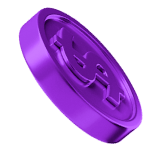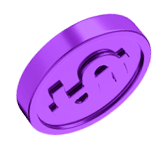
Nintendo Switch 2: ¿una revolución en el gaming o el inicio de una era demasiado cara?
La Nintendo Switch 2 promete ser un salto técnico importante dentro del catálogo de consolas de la compañía japonesa. Con mejoras significativas en potencia gráfica, rendimiento y nuevas funciones, se perfila como el relevo generacional que millones de jugadores estaban esperando. Pero su precio de lanzamiento, que superaría los 450 euros, ha encendido las alarmas entre usuarios, analistas y medios especializados.
Una consola más potente con un precio que divide opiniones
La nueva consola incorporará una pantalla OLED de mayor tamaño y resolución, mayor capacidad de almacenamiento y compatibilidad con tecnologías como el ray tracing. Además, mejorará notablemente el rendimiento de juegos tanto en modo portátil como en sobremesa.
Sin embargo, este avance técnico llega acompañado de un coste elevado que posiciona a la Nintendo Switch 2 como la consola más cara lanzada por la compañía. Esta situación genera un debate legítimo: ¿estamos dispuestos a asumir que el gaming es ahora un producto de lujo?
Mario Kart World lidera el catálogo inicial
Mario Kart World será uno de los títulos más importantes del lanzamiento. Nintendo apuesta fuerte con una versión ambiciosa de su franquicia de carreras, incluyendo competición online global, climas dinámicos por regiones y mayor profundidad en la jugabilidad. Todo apunta a que será un éxito de ventas y una de las principales razones para dar el salto a Switch 2.
Pero hay un problema: su precio estimado podría superar los 75 euros, y eso reabre el debate sobre si los juegos están alcanzando un coste desproporcionado para los consumidores.

GTA 6 y el umbral psicológico de los 100 euros
Otro caso clave que ejemplifica este fenómeno es el de GTA 6. El esperado título de Rockstar Games podría marcar un precedente al convertirse en uno de los primeros lanzamientos masivos con un precio cercano a los 100 euros.
El presupuesto de desarrollo de este juego es uno de los más altos de la historia, lo que explicaría este aumento, pero plantea una cuestión incómoda: si los juegos más importantes suben su precio base, ¿cuál será el nuevo estándar del mercado?
Japón, el paraíso del gamer: la consola más barata del mundo
Lo más llamativo de este debate es la enorme diferencia de precios según la región. En Japón, país de origen de Nintendo, la Switch 2 se lanzaría por 49.980 yenes, lo que equivale a unos 308,62 euros. Un precio justo, equilibrado, y acorde con lo que representa una consola de nueva generación.
Pero si nos vamos a Estados Unidos, el precio sube a 450 dólares (unos 415,54 euros), y en Europa alcanza los 469,99 euros, convirtiéndose en la región donde la consola será más cara.
Esta disparidad genera un malestar evidente entre los jugadores europeos, que pagarán más de 160 euros respecto a sus pares japoneses por exactamente el mismo producto.
¿Se está castigando al jugador occidental? ¿Es sostenible este modelo a largo plazo?









